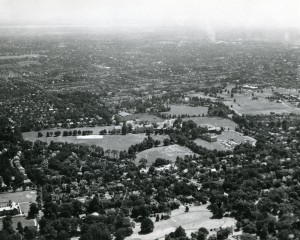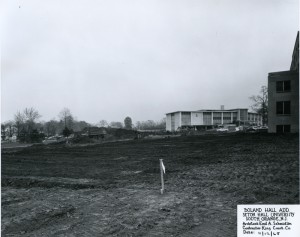The Archives and Special Collections Center at Seton Hall University is excited to be a part of the Newark Archives Project (NAP), a comprehensive online database of primary source material related to Newark co-sponsored by the Newark History Society and Rutgers University-Newark.
The Newark Archives Project’s mission is to “identify and describe Newark-related archival materials, not only in Newark and Essex County, but in New Jersey and New York, and ultimately throughout the United States.” What makes this project especially helpful for scholars is the in-depth description of materials related to Newark within collections; project staff survey materials in person as much as possible to identify relevant content and the locations of that content within a collection, giving greater and more specific detail than can often be achieved in the descriptions provided in finding aids alone. For researchers interested in Newark and its history, NAP is an invaluable tool for locating material.
Since 2010, when the pilot phase of the project was launched, about a dozen institutions, primarily in the city of Newark, have been surveyed. Now project staff have expanded beyond the city into neighboring towns and areas, surveying nearby institutions holding materials related to Newark. Seton Hall University’s Archives and Special Collections Center, as the repository for the Archdiocese of Newark and located in South Orange, adjacent to Newark, is delighted to contribute to NAP. Since June of this year, Dr. Gail Malmgreen, Project Director, and Alix Ross, Archivist, have been surveying our collections to highlight specifically Newark-related materials. Based on their work, the collection descriptions are included in the Newark Archives Project database with box and folder-level lists of relevant materials. More than 50 of our collections have been surveyed and described already, and they’re not finished yet!
The NAP site is very easy to use. Researchers can search for materials by keyword, subject, or time period, or can browse by repository. The result list gives the name of the collection, the repository that holds it, the collection size, and the first part of the collection description. Clicking on the collection title gives the full collection description as well as the detailed contents of Newark materials. The name of the repository is a link to more information on location and how the collection can be accessed, including a link to the institution’s website. So far more than 1300 collections are included in the database, and more are being added continuously.
This is great resource for local researchers or anyone with an interest in Newark and its history. Seton Hall is very proud to be included in the NAP database and we are grateful to the wonderful staff who have surveyed our materials. Check out Seton Hall’s collections in NAP, and explore from there!





